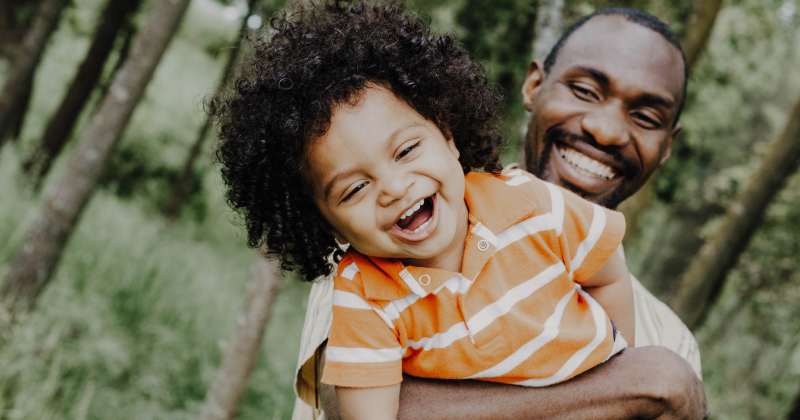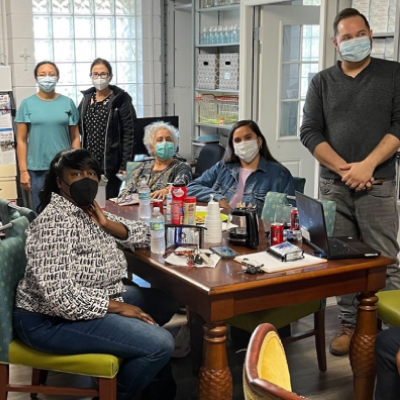- Who We Are
- Clinician Employment
- Publications
- Witness to Witness (W2W)
- Kugel & Zuroweste Health Justice Award
- Your Voice Matters: Photovoice Project
Tue, 02/08/2022 | by Kaethe Weingarten


[Editor’s Note: Here, Kaethe Weingarten, PhD, provides tips to de-stress by seeking out fun, as part of our ongoing blog series from MCN’s Witness to Witness. The W2W page offers numerous resources in English and Spanish to support the mental health of those in high-stress jobs working with marginalized and traumatized patients.]
In the last few months, Omicron has disrupted the holidays, work, school, events – practically every aspect of life. For most of us, this disruption has been hard to tolerate, after two long years of COVID-related derailing of our lives. One way I respond to these ongoing events is to scan for something that is enjoyable and fun that I can actually do in a day. A fun activity boosts my spirits, and I need that, to stay emotionally and physically healthy, and to have more energy available for others, a big part of what gives meaning and purpose to my life. So I’ve begun to think more closely about fun.
What exactly is fun? It’s different for everyone but research shows that for most people, fun consists of three elements: connection, playfulness, and flow.1 Fun is an important tool in managing stress and all three of the elements of fun have been shown to decrease a person’s perceived level of stress.
Connection with others, social connection, is especially important now, when isolation and loneliness are on the rise. For many people, in-person connections are not possible and virtual connections don’t feel like second-best, they feel worse than nothing. But interaction with others is key to well-being; it even supports our immune function. So, as with so much in life these days, connecting with others needs to become a priority. How? In person if it is safe to do so; virtually through phone or apps; or casually. We all have opportunities to strike up a conversation with someone we are in line with or do a random act of kindness. “Only connect,” is a phrase used by novelist E.M. Forster in 1910 and it could well become a motto for us this year.
Other forms of connection are also healthy for us. Interacting with pets has been shown to have significant benefits for our mental health.2 Many people “connect” with activities they enjoy and certainly many of us “connect” to the natural world. What may add benefit is thinking about these forms of connection as ways we have fun.
Playfulness is often associated with children but adults can be playful too…and we would probably be better off if we were. Playfulness contributes to resilience and may even support positive coping strategies when facing adversities. There are many ways people can experience playfulness. Some people find their playfulness with others; some by taking life less seriously, choosing a lighthearted approach to most things. Some people are just the opposite. Their playfulness comes from engaging in complexity and “toying” with ideas. And still others are good at whimsy, finding novel ways to engage with just about anything that arises. Any degree of playfulness is probably good for us.
Flow is the third element of fun. Flow is the enjoyable experience of being so lost in what we are doing that we lose track of time and everything else. What will trigger a flow state is different for all of us but we can usually recognize when we have been in flow and when others are in it. We can achieve flow with others or on our own.
CREATING FUN
The issue today is how to create fun when so many ways we might have done so in the past are blocked or less accessible. One important step may be to drop preconceived ideas about what “fun” is supposed to be and let ourselves think about our own experiences of fun. I did this myself and realized that reading, writing, and thinking about how to put ideas into handouts like this one is how I have fun! It made a difference to me to realize this; I enjoyed that realization!
Here are some questions that may help you find your ways of having fun.
- First, remember times you had fun. What did they have in common?
- If you accepted that you might have to scale back your previous experiences of fun to retain some piece of what was fun, do you come up with some ideas of things you can do?
- What happens if you think about the three elements of fun separately? What connections with others are enjoyable? What’s playful for you? What activities induce flow for you?
- Is there somebody whose way of having fun you enjoy? Can you enjoy vicarious fun?
Finally, when in doubt, there are always videos of people laughing. I have a video on my desk of an orangutan laughing and it never fails to make me laugh…and lets me know that no matter what, I can always have fun!
1 Price, Catherine. “Why We All Need to Have More Fun.” New York Times. 23 December 2021. https://www.nytimes.com/2021/12/23/well/mind/having-fun-suceeding-coronavirus-pandemic.html?searchResultPosition=1
2 Walsh F. Human-animal bonds I: the relational significance of companion animals. Family process,. 2009:48(4), 462–480. https://doi.org/10.1111/j.1545-5300.2009.01296.x
Got some good news to share? Contact us on our social media pages above.
Return to the main blog page or sign up for blog updates here.







